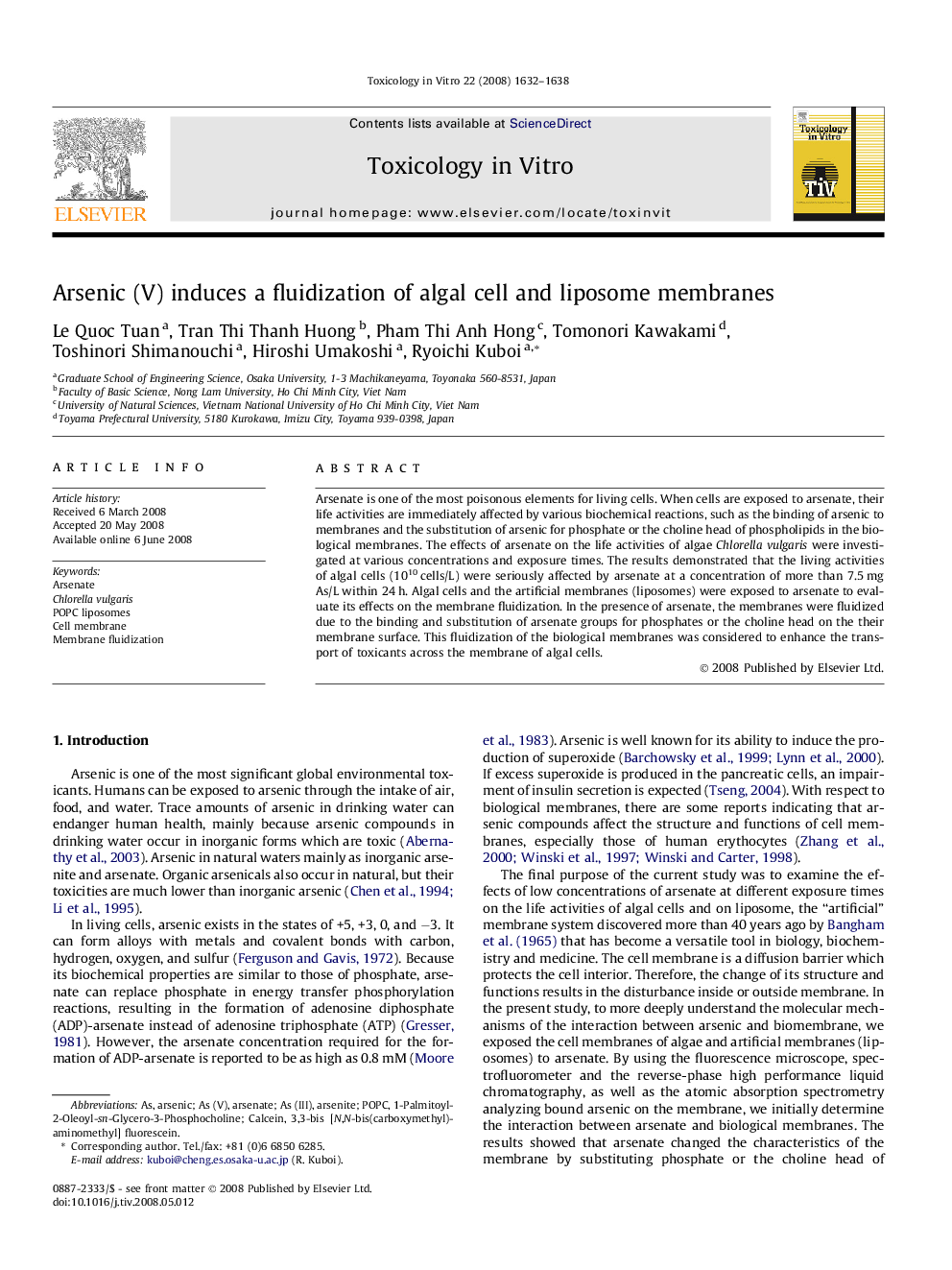| Article ID | Journal | Published Year | Pages | File Type |
|---|---|---|---|---|
| 2603111 | Toxicology in Vitro | 2008 | 7 Pages |
Arsenate is one of the most poisonous elements for living cells. When cells are exposed to arsenate, their life activities are immediately affected by various biochemical reactions, such as the binding of arsenic to membranes and the substitution of arsenic for phosphate or the choline head of phospholipids in the biological membranes. The effects of arsenate on the life activities of algae Chlorella vulgaris were investigated at various concentrations and exposure times. The results demonstrated that the living activities of algal cells (1010 cells/L) were seriously affected by arsenate at a concentration of more than 7.5 mg As/L within 24 h. Algal cells and the artificial membranes (liposomes) were exposed to arsenate to evaluate its effects on the membrane fluidization. In the presence of arsenate, the membranes were fluidized due to the binding and substitution of arsenate groups for phosphates or the choline head on the their membrane surface. This fluidization of the biological membranes was considered to enhance the transport of toxicants across the membrane of algal cells.
